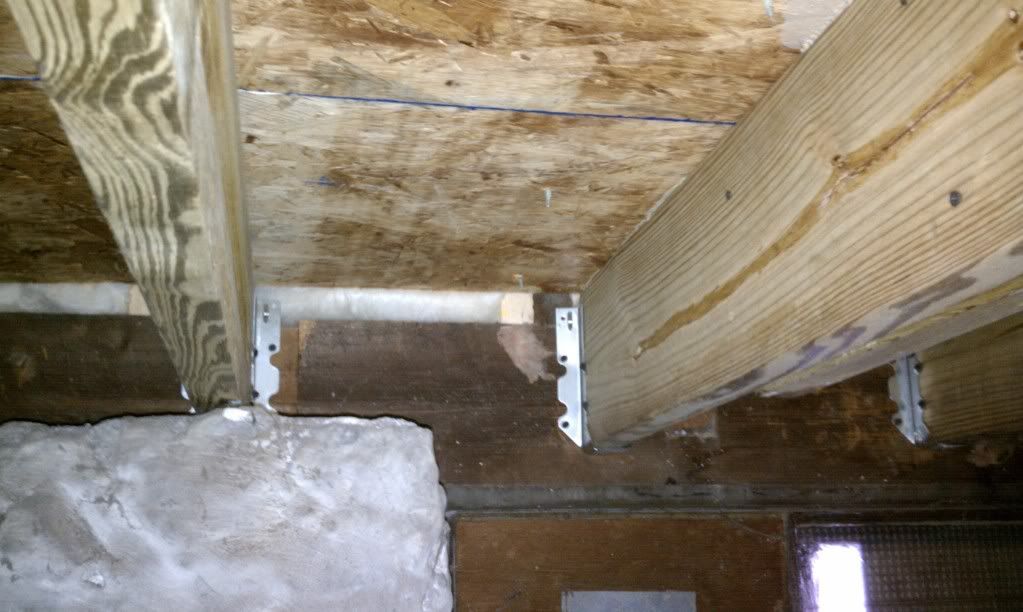jar546
Forum Coordinator
Does anyone else have this happening all the time? Simpson and USP don't give you and option for drywall screws on joist hangars. Not many screws are approved for this to begin with.



Not acceptable....but far too common....last town I worked in had alot of retired engineers from Prat and Whitney....had too explain this a bunch...rktect 1 said:Is this a serious question?I'm having a hard time believing this is acceptable somewhere.
no, and no no. Thou shalt not field-modify engineered products. With engineers stamp, ok.Jobsaver said:At least this problem is easy to fix as the screws are easy to remove and replace with the correct nail. What about the circumstance where hangers are installed using the wrong nail, say a 10cc sinker, or worse, 8d ringshank (very difficult to remove). For a fix, is it acceptable to drill new holes in hangers and install the appropriate number of correct nails?
Same footnote (different values) for hardened nails. Same footnote (different values) for standard nails. Not surprising.DRP said:Read footnote 2 in the NDS under wood screws... ASTM A 653, grade 33 steel and then lists bending yield strengths required. This is the old soft wood screw that the head stripped out before you got it driven. They are ductile and will bend like a nail rather than snapping like a drywall OR deck screw, that wasn't a recommendation, don't use those unless you see the designation listed on the box, which it isn't. A field demonstration might be to drive a nail and a hardened screw halfway into a dense piece of wood and then whack it sideways hard. The screw will likely fail, the nail will bend but hold. This is the difference between a ductile failure that screams in warning and a brittle failure that gives none. Since Simpson hangers are a proprietary engineered product I do believe they can list approved screws that have been tested to give tabulated results. I had a helper that thought screwing toeboards to the roof was a great idea, till he went rattling down by the dormer, screw sheared. I've had decking with juvenile wood shrink lengthwise and shear coated deck screws off.
